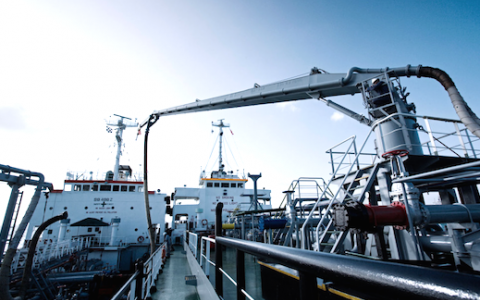
It’s been a tough year for Singapore, the world’s largest bunkering hub, fighting extreme price volatility as well as one of the worst off-spec scandals in more than a decade. Authorities are taking action.
At this week’s major bunkering conferemce, Sibcon, the Maritime and Port Authority of Singapore (MPA) has announced plans to start registering sales of bunker fuel electronically over the next two years to improve efficiency and trade transparency and cut down on fraud.
The MPA will switch to electronic bunker delivery notes from physical documents next year, followed by a project to register oil flows digitally in 2024 using mass flow meters.
In March, Splash broke the story of a sprawling contaminated bunker scandal, which ultimately affected 200 ships, with the subsequent legal battles likely to run for years.
Chlorinated compounds were found in many samples of fuel sold by Glencore and PetroChina, resulting in damage to fuel injection pumps, injectors, filter elements and purifier systems with many ships breaking down.
The MPA ultimately laid the blame for the contamination outbreak on suppliers from the Middle East.
The fuel was traced back by the MPA to fuel purchased by Glencore in January and February this year. Glencore had purchased the fuel through Singapore-based Straits Pinnacle, which had contracted its supply from Unicious Energy. The contaminated HSFO was loaded at the Port of Khorfakkan in the United Arab Emirates (UAE) onto a tanker and shipped to floating storage facilities in Tanjung Pelepas, Malaysia to be further blended. The blended HSFO was subsequently delivered to storage facilities in Singapore.
Singapore’s swift, comprehensive action in the wake of the scandal breaking drew praise, as has its commitment to use mass flow meters to ensure the right volumes of fuel are actually delivered – a piece of technology very few other bunkering hubs have engaged with.
“Despite the bunkering industry’s scale and the essential role it plays in supporting global maritime trade, much of it is still steeped in old-fashioned, outmoded operational practices. There is a continuing lack of transparency in the way marine fuel is delivered. This has to change,” argued Kenneth Dam, global head of bunkering at TFG Marine, in a post on the company’s website this summer. TFG Marine is a joint venture between Trafigura and John Fredriksen founded two years ago. Dam urged other leading bunkering hubs to follow the lead of Singapore and get mass flow meters installed as soon as possible.
A recent Blue Insight study assessed bunker deliveries at Rotterdam and Fujairah, the world’s second and third largest bunkering ports. It concluded that reported VLSFO bunker volumes at these two locations resulted in $250m in operating losses for suppliers across 2021 with bunker buyers being severely short-changed on volumes.
TFG Marine, which wants mass flow metes to be made mandatory globally, has joined with 50 other industry participants representing 2,000 vessels to appeal to the Rotterdam and the Antwerp port authorities to follow Singapore’s lead and introduce mandatory mass flow meter delivery in their jurisdictions.
